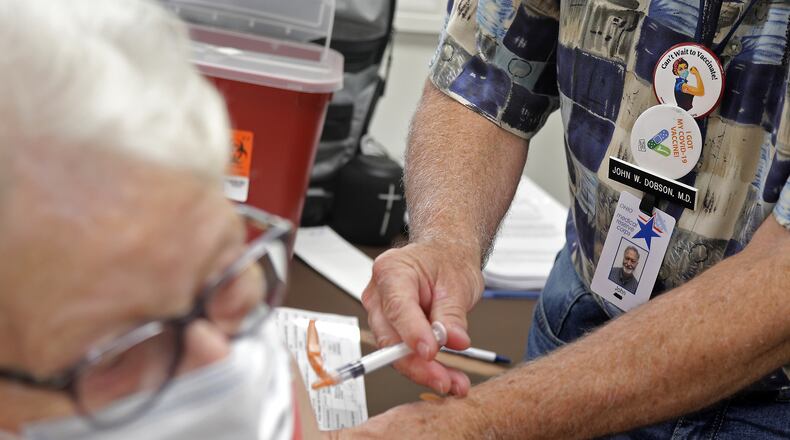“This is so much easier. It’s a simplified process, and it makes sense,” said Charles Patterson, health commissioner for the Clark County Combined Health District. “There is now one initial dose, so if someone has never had a COVID vaccine before and they decide now they want to do that, there’s one dose, and we’re going to use the latest and greatest vaccine, the bivalent vaccine.”
The CDC’s recommendations, which also include another booster shot for older adults and immunocompromised individuals, followed the U.S. Food and Drug Administration amending the emergency use authorizations of the Moderna and Pfizer-BioNTech COVID-19 bivalent mRNA vaccines.
“At this stage of the pandemic, the data supports simplifying the use of the authorized mRNA bivalent COVID-19 vaccines, and the agency believes that this approach will help encourage future vaccination,” said Dr. Peter Marks, director of the FDA’s Center for Biologics Evaluation and Research.
Evidence is showing that most people in the U.S. who are 5 years old or older have antibodies to SARS-CoV-2, the virus that causes COVID-19, either from prior vaccination or infection, Marks said. Those antibodies can serve as a foundation for the protection provided by the bivalent vaccines.
“COVID-19 continues to be a very real risk for many people, and we encourage individuals to consider staying current with vaccination, including with a bivalent COVID-19 vaccine,” Marks said. “The available data continue to demonstrate that vaccines prevent the most serious outcomes of COVID-19, which are severe illness, hospitalization, and death.”
“They simplified the vaccine schedule so that to be up to date with your vaccinations, most people only need to have one of the updated bivalent boosters that have been available since last fall,” said Dr. Becky Thomas, medical director for Public Health - Dayton and Montgomery County. “The original monovalent vaccine that was effective against the original strain of COVID is no longer available, so that simplifies everything a whole lot.”
People who are 65 and older, along with those who are immunocompromised, are also able to get another booster shot of the bivalent boosters.
“We know that when you get a vaccine for COVID, the protection wanes over time, and so people who are highest risk, over 65 or immunocompromised, if it’s been four months since their previous dose, they can then get a booster vaccine,” Patterson said.
Alternatives to mRNA COVID-19 vaccines remain available for people who cannot or will not receive an mRNA vaccine, according to the CDC. CDC’s recommendations for use of (monovalent) Novavax or Johnson and Johnson’s Janssen COVID-19 vaccines were not affected by the changes made.
The monovalent vaccines will also no longer be used, and local agencies are in the process of disposing of those.
“They’re off our shelves,” Patterson said. “We will be disposing of them based on the manufacturer’s recommendations and according to the U.S. EPA standards.”
About the Author

